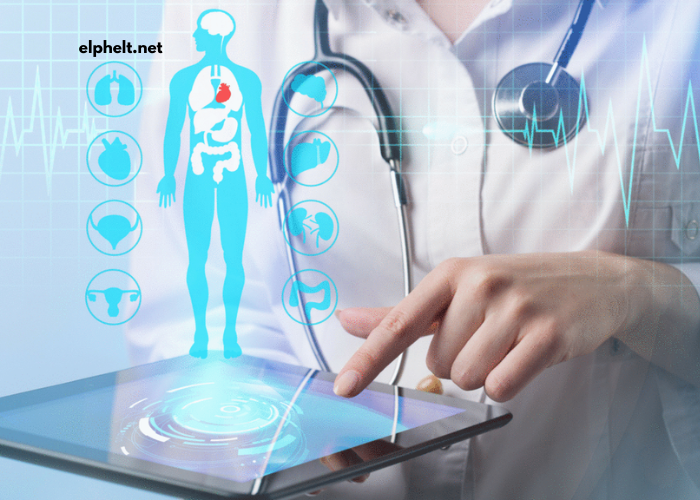The healthcare industry is constantly evolving, with new technologies, treatments, and processes emerging at a rapid pace. As we step into 2025, it’s clear that healthcare is undergoing significant transformations, influenced by advancements in medical science, artificial intelligence, digital health, and patient-centered care. These innovations are not only improving patient outcomes but also reshaping how healthcare providers deliver services. This article explores the key health innovations in 2025 and how they are changing the face of healthcare.
The Role of Artificial Intelligence in Healthcare
Artificial intelligence (AI) is arguably the most transformative force in healthcare today. By 2025, AI is expected to be fully integrated into many aspects of the healthcare ecosystem, from diagnostics and treatment planning to administrative functions and patient care.
AI-Powered Diagnostics
One of the most promising applications of AI in healthcare is its ability to assist in diagnostics. AI systems are becoming increasingly adept at analyzing medical data such as images, genetic sequences, and patient histories. In fact, AI algorithms can sometimes detect diseases such as cancer, heart disease, and neurological disorders earlier and more accurately than human doctors. This is particularly crucial in areas like radiology and pathology, where AI-powered tools can analyze medical scans to identify abnormalities that might be missed by human eyes.
For example, deep learning models are being used to examine medical images, including X-rays, MRIs, and CT scans, to detect tumors, fractures, or other conditions with exceptional accuracy. By 2025, AI-powered diagnostic tools will likely become standard in many medical practices, improving early detection and reducing human error.
Predictive Analytics for Personalized Medicine
Another area where AI is revolutionizing healthcare is in predictive analytics. AI can analyze vast amounts of patient data to identify trends and predict health outcomes. By looking at a combination of genetic data, lifestyle factors, and environmental influences, AI can help healthcare providers develop personalized treatment plans for patients.
For instance, AI is being used to predict the likelihood of patients developing chronic conditions such as diabetes, hypertension, or heart disease. This enables healthcare providers to intervene early, offering preventative measures tailored to an individual’s specific risk factors.
The Rise of Telemedicine and Virtual Care
Telemedicine has already made significant strides in recent years, especially during the COVID-19 pandemic when healthcare systems globally had to adapt to remote consultations. As we move into 2025, telemedicine is expected to become an integral part of the healthcare landscape, enhancing access to care and improving patient outcomes.
Remote Patient Monitoring
By 2025, remote patient monitoring (RPM) is poised to become commonplace. Through wearable devices, smart sensors, and mobile apps, healthcare providers will be able to monitor patients’ vital signs and health metrics in real-time, even when the patient is at home. This will be especially beneficial for individuals with chronic conditions, such as diabetes or heart disease, who need regular monitoring but may find it difficult to visit healthcare facilities frequently.
Remote monitoring allows healthcare providers to intervene proactively when a patient’s condition changes, preventing hospitalizations or emergency room visits. Furthermore, it will lead to more personalized care, as providers can adjust treatment plans based on real-time data rather than relying on occasional in-person visits.
Virtual Consultations and AI-Driven Care
Virtual consultations are expected to become more seamless by 2025, with improved video conferencing technology and more sophisticated AI-driven virtual assistants. Virtual healthcare platforms will allow patients to consult with specialists or primary care providers from the comfort of their own homes, reducing wait times and improving access to healthcare, particularly for individuals in rural or underserved areas.
Moreover, AI-powered virtual assistants will be able to provide patients with preliminary consultations, symptom analysis, and medication management advice, ensuring that patients receive timely information and guidance without needing to visit a healthcare facility.
Breakthroughs in Precision Medicine
Precision medicine, or personalized medicine, has the potential to revolutionize how diseases are treated and prevented. By 2025, advancements in genomics and biotechnology will allow healthcare providers to tailor treatments to individual patients based on their genetic makeup, lifestyle, and environmental factors.
Genomic Medicine
With the decreasing cost of genome sequencing and advancements in gene-editing technologies like CRISPR, precision medicine will become a cornerstone of modern healthcare. By analyzing a person’s genetic information, healthcare providers can identify genetic predispositions to certain diseases and develop targeted therapies that are more effective and have fewer side effects.
For instance, patients with specific genetic mutations may be able to receive personalized cancer treatments designed to target the mutation directly, offering better outcomes than traditional chemotherapy. Additionally, gene therapies could one day be used to treat or even cure genetic disorders that were previously considered untreatable.
Pharmacogenomics
Pharmacogenomics is the study of how an individual’s genetic makeup affects their response to medications. By 2025, pharmacogenomic testing will become a routine part of healthcare, helping doctors choose the most effective medications and dosages for each patient.
This approach will not only increase the efficacy of treatments but will also reduce the risk of adverse drug reactions. For example, individuals with certain genetic variations may metabolize certain drugs too quickly or too slowly, which could lead to ineffective treatment or dangerous side effects. Pharmacogenomics will allow for more precise prescriptions, improving patient safety and satisfaction.
The Future of Healthcare Wearables
Wearable health technologies are rapidly evolving, and by 2025, they will be even more advanced, offering greater capabilities for monitoring and managing health.
Smartwatches and Health Monitoring Devices
Smartwatches and other wearable devices are already being used to track steps, monitor heart rate, and provide insights into sleep patterns. By 2025, these devices will have expanded capabilities, including the ability to monitor more complex health parameters like blood glucose levels, blood pressure, and even mental health indicators.
For example, new types of smartwatches could feature non-invasive sensors that detect blood oxygen levels, dehydration, or even early signs of a stroke or heart attack. This continuous data collection will allow individuals to monitor their health in real-time and alert them to potential issues before they become serious problems.
Biometric Sensors for Chronic Disease Management
Wearable sensors are also expected to play a significant role in the management of chronic diseases. For patients with conditions like asthma, diabetes, or epilepsy, wearable devices can provide continuous monitoring and real-time alerts to both the patient and their healthcare provider if the patient’s condition worsens.
These devices can be connected to remote monitoring systems, allowing healthcare providers to track trends over time and intervene proactively when needed. The ability to track biomarkers continuously, such as blood sugar levels in diabetics, will allow for better disease management and reduce complications associated with chronic conditions.
Advancements in Robotics and Surgery
Robotic technology in surgery has already shown its potential to improve precision and reduce recovery times. By 2025, robotic systems will become even more advanced, offering new possibilities for minimally invasive surgery and enhanced patient outcomes.
Robotic-Assisted Surgery
By 2025, robotic-assisted surgeries will be even more refined, with robots performing increasingly complex procedures with greater precision and fewer errors. These systems can enhance the capabilities of surgeons by providing them with more accurate 3D visualizations and enhanced dexterity in tight or difficult-to-reach areas of the body.
Minimally invasive surgery, powered by robotics, will continue to reduce patient recovery times and lower the risk of infection. Patients who undergo robotic-assisted surgery may experience less pain, shorter hospital stays, and quicker returns to daily activities compared to traditional surgery.
Surgical AI Systems
AI will also play an integral role in robotic surgery. Surgeons will have access to AI-powered tools that can assist with decision-making during procedures, analyzing real-time data and offering suggestions for the best course of action. These systems can identify potential risks, optimize surgical approaches, and enhance the overall safety and efficacy of the procedure.
The Role of Blockchain in Healthcare
Blockchain technology, known for its use in cryptocurrency, is gaining traction in the healthcare sector due to its ability to provide secure, transparent, and immutable data storage solutions. In 2025, blockchain could play a crucial role in improving healthcare data management and patient privacy.
Secure Medical Records
Blockchain technology will allow healthcare providers to securely store and share patient records, ensuring that sensitive data is not tampered with or lost. This will help reduce medical errors, improve care coordination, and enhance patient privacy. With blockchain, patients could have greater control over their medical records, allowing them to decide who has access to their information.
Supply Chain Transparency
Blockchain can also improve the transparency and security of medical supply chains, ensuring that medications, vaccines, and medical equipment are tracked from production to delivery. This could help prevent counterfeit drugs from entering the market, improve the safety of medical products, and ensure that patients receive the right medications at the right time.
Conclusion
Healthcare in 2025 is poised to be shaped by groundbreaking innovations across a variety of domains, from AI and precision medicine to telemedicine, robotics, and wearables. These advancements will not only enhance the quality of care but will also increase accessibility, reduce costs, and improve overall patient outcomes. As technology continues to evolve, the future of healthcare looks brighter than ever, offering new opportunities to improve the well-being of individuals worldwide.
For healthcare providers, staying informed about these innovations will be key to staying competitive and providing the best care possible. For patients, these changes offer exciting new possibilities for improved health, earlier detection of diseases, and more personalized treatments. The healthcare landscape in 2025 is on the brink of a revolution, and the future is filled with promise.







